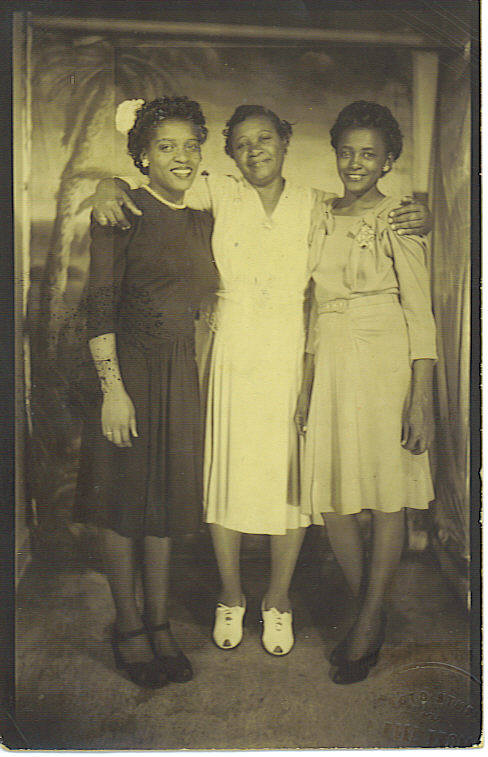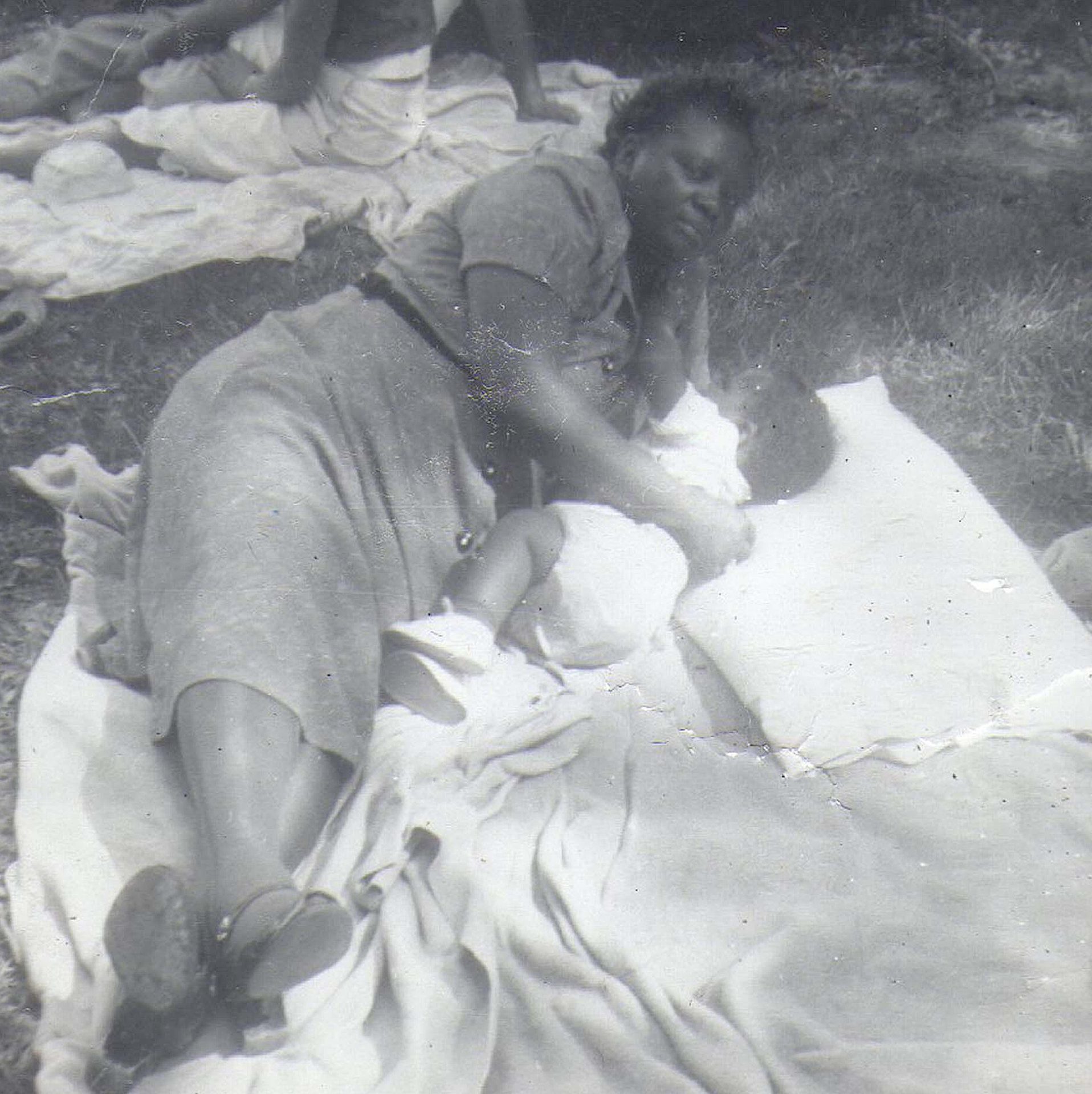Deborah Brown grew up calling her “Aunt Sister,” and she remembers her storied life through the haze of 𝘤𝘩𝘪𝘭𝘥hood in segregated Kansas City, Mo., more than a half a century ago.
There were the fancy limos and Cadillacs that ferried young relatives to school and out for barbecue, the White-owned department store that opened its doors just so Sarah Rector could shop; the rolling farmland where Rector would invite Brown’s mother and the 𝘤𝘩𝘪𝘭𝘥ren for family gatherings.
Brown, then a grade-schooler living in a two-bedroom house with three siblings, her parents and her grandmother, marveled but didn’t dare ask questions.

“We’re from a generation where you don’t spread family business,” said Brown, a very fit-looking 72-year-old with a short afro seated in the lobby of the Hampton Inn in Bowie, Md.
Her mother, Rosa Rector, would simply say, “Aunt Sister can afford to do that,” Brown said. “That’s the way she would put it. ‘She can afford it.’ She never said she was rich.”
It wasn’t until Brown was in her late teens — after Rector died in 1967 at the age of 65 — that Brown realized Aunt Sister had indeed been rich. Historically so.
For the first time, Brown heard the word: oil.
Rector, whose relatives had been enslaved by Creek Indians and later lived among the tribe’s members in Oklahoma, was just 11 in 1913 when Black Gold was discovered on her allotment of tribal land. Rector became instantly wealthy. A guardian was appointed to manage young Sarah’s income, and a judge oversaw the guardian. Along with the oil, the checks began flowing, as if by magic, to the Rectors, who, illiterate and barely scraping by, knew little about managing money.

The White-owned newspapers, seemingly unconstrained by facts and at times human decency, were openly racist in their coverage.
“Oil Made Pickaninny Rich” blared a headline in The Washington Post, which described Rector in 1914 as “an orphan, crude, Black and uneducated, yet worth more than $4,000,000.”
The truth: At the time, Rector was living with both her parents in a two-room cabin. She’d yet to become a millionaire, crossing that threshold at about 18, with oil earnings that would be worth $14 million today.
The sensationalism that dogged Rector in her youth has continued long after her death. In a role not unfamiliar to descendants of historical figures, Brown said she finds herself constantly playing whack-a-mole as journalists and academics replicate earlier errors. In the internet era, she said with a sigh, it sometimes seems like a losing battle.
The most vexing bit to Brown: the black-and-white photo of the somber-faced girl with pigtails wearing a dark plaid dress. It has appeared on the cover of an award-winning book about Rector, on the Facebook page of the National Museum of African American History and Culture in Washington, and elsewhere.
Although the image can be traced to the 1915 issue of the The American magazine, a now-defunct White-owned publication, Brown insists it is not her aunt. Brown’s mother insisted, too. Rector, with the family’s signature round face, looked nothing like the girl with the more angular chin in the picture, said Brown, who first caught sight of the photo online in 2010. “We can’t prove with absolute certainty to everybody that it’s not her,” Brown said, because there are no 𝘤𝘩𝘪𝘭𝘥hood photos that exist for comparison. “But it definitely isn’t her.”
The retired phys ed teacher had traveled from Kansas City to Maryland with her partner to coach a women’s softball tournament. But she was also on a dual mission: She had packed two small black-and-white photographs of Aunt Sister to hand to the right authority at the African American Museum in D.C.
“We were going to present them and say, ‘This is the record. This is Sarah Rector,’ ” she said.
Enslaved by Native Americans
Rector’s life story did not need embellishment. Her maternal great-great-grandmother had been enslaved by Creek Chief Opothle Yoholo in Alabama during the first half of the 19th century, according to Tonya Bolden, author of “Searching for Sarah Rector: The Richest Black Girl in America” published in 2014. (Bolden said she found the disputed book cover photo in The American magazine. Inside, it says it was Rector “at 12,” while the 1915 caption, which does not include a photo credit, says she was 10. )
Although slavery was not common among Native Americans, prominent members of the Cherokee, Chickasaw, Choctaw, Creek and Seminole tribes in the southeastern states sometimes enslaved people, in part to flaunt them as status symbols. How better to impress White Southerners than to become slaveholders themselves? In return for that and otherwise assimilating to Anglo-American culture, White Southerners often called them the “Five Civilized Tribes.”

Even as tens of thousands of Native Americans were forcibly relocated northwest to Indian Territory from 1831 to 1850 in the genocidal journey known as The Trail of Tears, the tribes largely sided with the Confederate states during the Civil War. Many of the Black people who accompanied the tribes lived in slavery until 1866, after treaties with the federal government abolished the ownership of people on tribal lands.
By the early 20th century, the Creek Freedmen, as they were known, had settled in all-Black towns dotting Indian Territory,which in 1907 became the state of Oklahoma. Taft in Muskogee County (the Creeks were known as the Muscogee) was prominent among them as home to two newspapers, a general store, a bank, a soda factory and two hotels. Many Freedmen eked out a living raising corn, cotton and other common crops.
In 1902, young Sarah Rector was 𝐛𝐨𝐫𝐧 into this world, the second eldest of Joe and Rose Rector’s nine 𝘤𝘩𝘪𝘭𝘥ren. Around 1906, Rector and her two siblings, Rebecca and Joe Jr., were each allotted 160 acres by the federal government, Bolden writes. But the land given to the Freedmen was of generally inferior quality — rocky and unfit for farming, hardly worth the tax burden. Sarah’s acreage, divided into two parcels near the bend in the Cimarron River, did not appear to be an exception.
Joe Rector’s attempts to lease it for oil and natural gas exploration at first netted little. Yet the possibility of riches teased the imagination as landholders throughout Oklahoma began striking oil. In 1913, a speculator produced a gusher on Sarah’s land. Soon, the wells, which would come to number in the dozens, were pumping 2,500 gallons a day, with about $300 a day — a 12.5 percent cut — flowing Sarah’s way, Bolden writes.
Great greed followed great wealth, however, and the hunger for oil money sometimes led to murder, a phenomenon that played out notoriously in the decades-long 𝓀𝒾𝓁𝓁ings of the Osage Indians for their oil rights beginning just a few years before Sarah struck it rich. Around the same time, two 𝘤𝘩𝘪𝘭𝘥ren of Freedmen whose allotments had spouted oil were murdered by dynamite as they slept.
The federal government required the appointment of financial guardians, usually White men, to manage the oil wealth of Native Americans and Freedmen. Many turned out to be thieves. But Rector’s first guardian, a rancher named T.J. Porter, invested her earnings judiciously in rich river bottom land, business properties and lucrative mortgages. The investments and payments to Sarah were overseen by Judge Thomas Leahy, who, by accounts of the time, was one of Muskogee County’s most honorable men.
The two-room cabin in which the Rector family lived was replaced by a five-room house. A horse and buggy were purchased to spare the 𝘤𝘩𝘪𝘭𝘥ren the two-mile trek to school. Joe Rector also began receiving payments of about $50 a month — about $1,500 in today’s dollars. Later, Sarah received a phonograph, a piano and a Premier motor car, Bolden writes.
Sensationalist media coverage
Yet depending on the publication, the family was either senselessly rich or persistently poor.
The White-owned newspapers across the country heralded young Sarah as the “world’s richest Negro girl” and gushed about her supposed fairy-tale life, all the while suggesting she was unworthy of it.
“Consider Little Sarah Rector, Unkempt, Illiterate, 12-year-old 𝘤𝘩𝘪𝘭𝘥, Half Negro, Half Creek Indian,” read a 1918 article published in the Enid (Oklahoma) Events, managing two errors in the opening lines. Rector was about 16 then and not half-Creek. “If Sarah had rubbed Aladdin’s lamp and commanded the Jinn to provide every luxury her most vivid imaginings could picture, the Jinn’s efforts would yet be far removed from the actuality.”
A story on Sarah Rector in the Nov. 24, 1915, edition of the Bangor Daily News in Maine. (The Bangor Daily News)
The rags-to-riches story made its way around the world, with American newspapers reporting that several German youth wrote Leahy requesting the 𝘤𝘩𝘪𝘭𝘥’s hand in marriage.
For their part, Black-owned newspapers, including the influential Chicago Defender, speculated anxiously that Rector’s White guardian was taking advantage of her and shortchanging her education.
“Richest Colored Girl Forced to Live in Shack,” the Defender proclaimed.
The facts, including that Rectors themselves had selected Porter, a family friend, went unacknowledged.
W.E.B. Dubois, founder and editor of the NAACP’s Crisis magazine, set out to discern whether the reports were true. In response to DuBois’s inquiry, Judge Leahy wrote a letter to the famous Black intellectual with a frank accounting of spending on Rector’s behalf: $54,490 in eight months. The judge also approved money for Rector to attend the 𝘤𝘩𝘪𝘭𝘥ren’s school at Tuskegee Institute.
Then in 1917, the source of all the speculation vanished from Oklahoma.
The high life in Kansas City
Did Joe and Rose Rector move the family to Kansas City to escape the violent fate that befell too many oil-rich Natives and Freedmen? Brown assumes so.
Decades after the Rectors made Missouri home, Brown’s parents warned their 𝘤𝘩𝘪𝘭𝘥ren never to inquire about their aunt’s land in Oklahoma. “They said, ‘Whatever’s down there, you don’t bother with it. It’s too dangerous,’ ” Brown recalled.
The devastation of the Tulsa Race Massacre
Soon after arriving to Kansas City, the Rectors bought a sprawling stone foursquare at the corner of 2000 East 12th Street. Sarah entertained Duke Ellington, Joe Louis and Count Basie in the house that soon became known as the Rector Mansion.
Around 1917, Sarah Rector and her family moved into a large stone foursquare in Kansas City, which became known as the “Rector Mansion,” and is now owned by a community agency and undergoing renovation with a grant from the National Trust for Historic Preservation. (Family photo)
At 18, Rector came fully into her wealth, free now of guardians. The Roaring 20s had dawned and the spending began in earnest: furs, luxury cars, lavish parties and the shopping sprees at the Emery, Bird, Thayer department store. Rector married the first of her two husbands at the age of 20 and bore three sons, all now deceased.
No one, including historians, is clear on what happened to Aunt Sister’s money. The stock market crash of 1929 and the Depression that followed probably depleted her accounts. At some point, the mansion was sold and Rector moved into a more modest house. Certainly, the spending coupled with what Brown believes was little understanding of managing money didn’t help. If there’s a lesson for others in her legacy, it’s in the importance of financial literacy, she said.
“No one took the time to teach her how to spend the money or how to invest it,” Brown said.
Of course, Brown has no memory of Rector spending anything. Her memory of Aunt Sister is all about family. In the late 1950s, Brown was 7 and Rector was in her late 50s when Aunt Sister would have her and her mother, Rector’s youngest sister, down to her farm. The adults would work in the garden farming potatoes and a rich variety of greens while Brown, her siblings and Rector’s 𝘤𝘩𝘪𝘭𝘥ren played in the barn and the dirt and got chased by the “evil geese.” She recalls Rector’s generosity with her time and devotion to family.
It’s this legacy that Brown saw herself paying tribute to about 12 years ago when she began with the help of her sisters and partner, Karen Riffle, to document Sarah Rector’s life. The fallacies kept cropping up and, worst of all, that pesky photo. Diane Euston, a Kansas City history writer and preservationist, had seen it, too. In researching Sarah Rector, she decided to go directly to Brown and her three sisters who are still right there in Kansas City. Euston published her myth-busting piece about Rector in 2019 on her history blog, The New Santa Fe Trailer. Since then, she’s been contacting historical societies to urge them not to use the image.
On Brown’s visit to the D.C. area, she set out with Riffle for the Smithsonian’s National Museum of African American History and Culture bearing the faded photographs of Rector as a woman. (Museum officials did not respond to a request for comment for this story.)
Brown walked up to the visitors desk and asked the two women behind the counter if she could speak to a museum official to explain the photos before handing them over.
“You can leave them as donations,” one of the women politely told her.
Brown returned the images to the envelope.
Later, she sounded frustrated. “I’m not going to leave them so they can sit on someone’s desk,” Brown said. “That’s not going to happen.”
The Smithsonian can count on it, she said: She’ll be back in touch.





